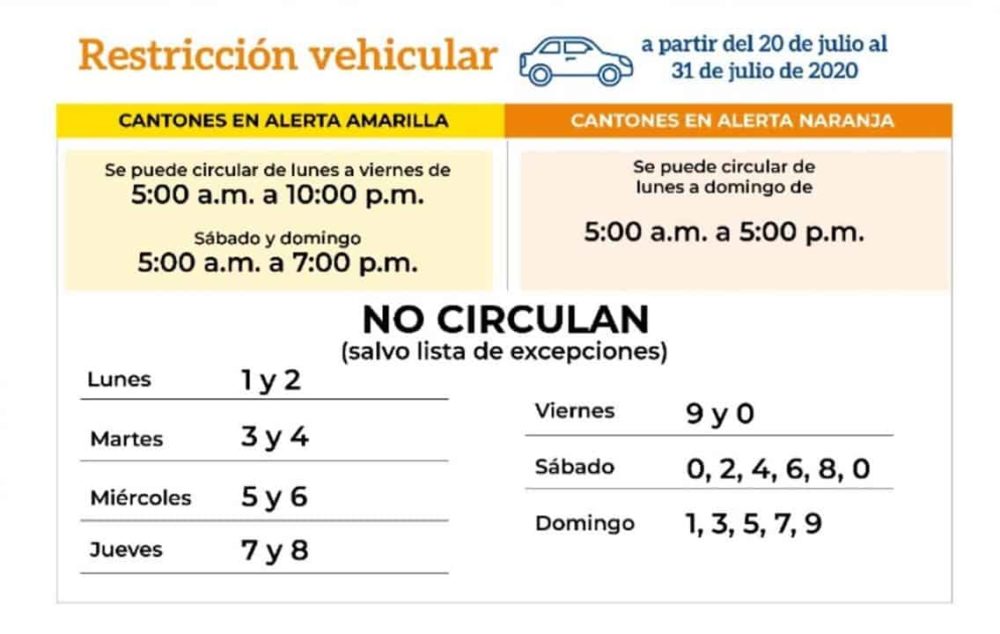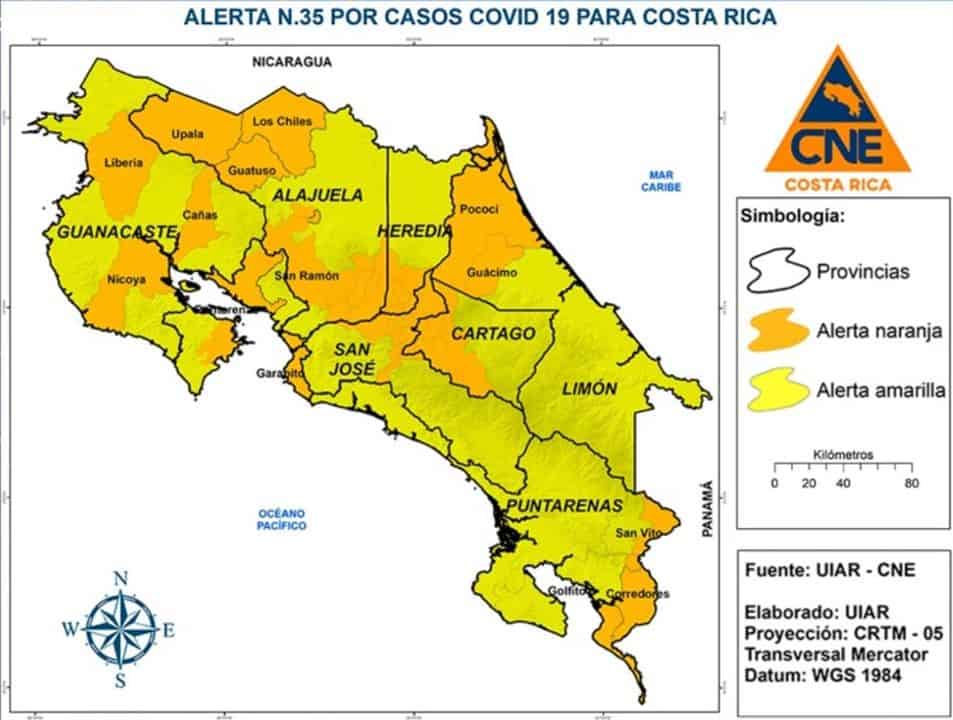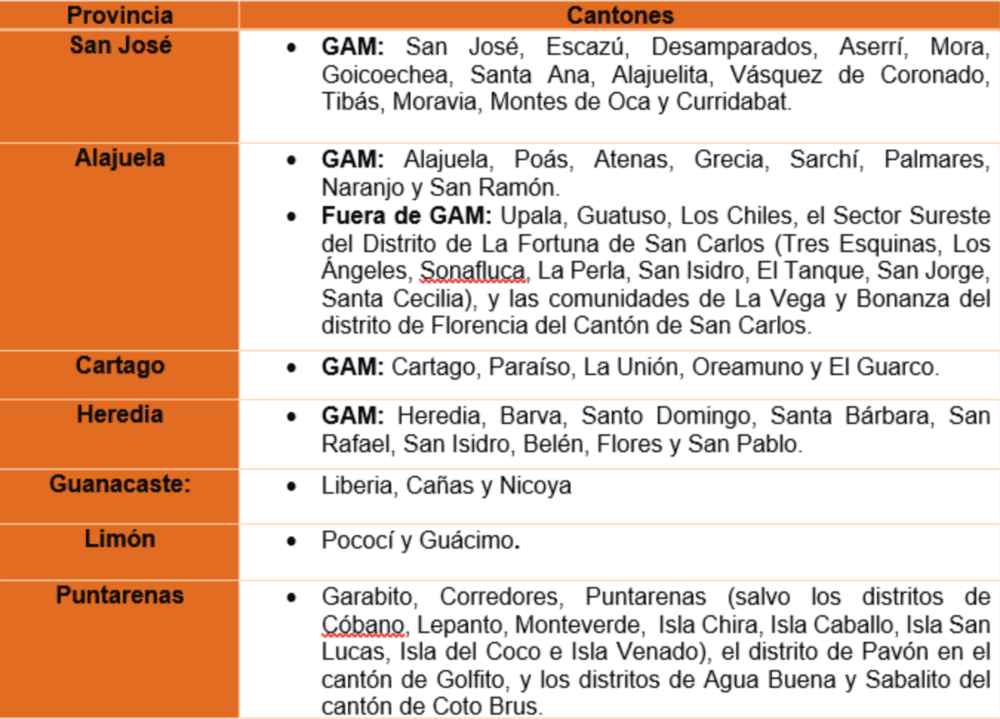The National Emergency Commission (CNE) on Friday announced changes to Costa Rica’s Orange and Yellow Alerts, including easing the country’s vehicular restrictions.
Here are the details as announced Friday. They will be enforced beginning Monday, July 20 through Friday, July 31.
Changes to national vehicular restrictions
Starting Monday, Costa Rica is easing vehicular restrictions as follows. The following daytime rules apply nationwide:
- Monday: Vehicles with license plates ending in 1 and 2 cannot drive.
- Tuesday: Vehicles with license plates ending in 3 and 4 cannot drive.
- Wednesday: Vehicles with license plates ending in 5 and 6 cannot drive.
- Thursday: Vehicles with license plates ending in 7 and 8 cannot drive.
- Friday: Vehicles with license plates ending in 9 and 0 cannot drive.
- Saturday: Vehicles with license plates ending in even numbers cannot drive.
- Sunday: Vehicles with license plates ending in odd numbers cannot drive.
In Orange Alert areas, daytime driving is permitted from 5 a.m. to 5 p.m. on weekdays and weekends.
In Yellow Alert areas, daytime driving is permitted from 5 a.m. to 10 p.m. on weekdays, and 5 a.m. to 7 p.m. on weekends.
The nationwide nighttime vehicular restriction remains in force.

Changes to Orange Alert
The below map and list indicate all regions in Costa Rica that will be under an Orange Alert beginning Monday, July 20.


The new alerts comprise the following changes:
- The canton of Nicoya, and the districts of Agua Buena and Sabalito in Coto Brus will move to an Orange Alert.
- The cantons of Garabito**, El Guarco**, Puriscal, Zarcero, Alvarado, Bagaces, Carrillo, Talamanca and Golfito (except the district of Pavón) will move to a Yellow Alert.
**Note that Garabito and El Guarco will be upgraded to a Yellow Alert, and will not remain under Orange Alert as was originally announced. More details here.**
For all regions under an Orange Alert, the following economic activities are permitted on weekdays and weekends at 50% capacity:
- Grocery stores and supermarkets (selling essential goods only), bakeries, butchers and greengrocers.
- Sales of agricultural products, veterinary products, hygiene supplies, hardware stores.
- Riteve, automobile repair shops, equipment/machinery repair, parts shops.
- Banking and financial services.
- Funeral homes.
- Health centers, veterinary clinics, pharmacies, nurseries, and care centers for vulnerable populations.
- Farmer’s markets.
- Hotels and motels.
- Gas stations, waste collection, lottery sales, private parking lots.
All regions under a Yellow Alert remain in “Phase 3,” which allows for most commercial businesses to remain open during the week and on weekends, for extended beach hours, and for religious services. Hotels can operate at 100% capacity. Bars and nightclubs must remain closed.
Nationwide, non-face-to-face productive activities may operate, as can all delivery services. Public transportation can operate normally nationwide starting Monday, according to Casa Presidencial.
Costa Rica expands mask requirement
Costa Rica now requires that masks or face shields be worn at bus stops, Health Minister Daniel Salas announced.
In addition, Costa Rica requires masks or face shields in the following situations:
- For guests at supermarkets or any other commercial business.
- For workers at all commercial businesses, unless there is a physical barrier between the worker and customer.
Homemade masks are permitted. You may be denied entry into an establishment if you do not have a mask or face shield.





